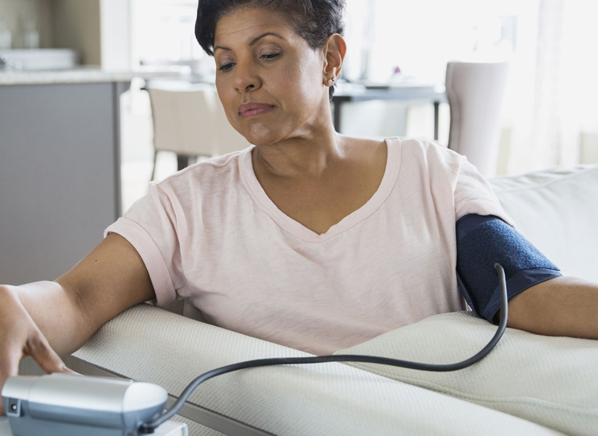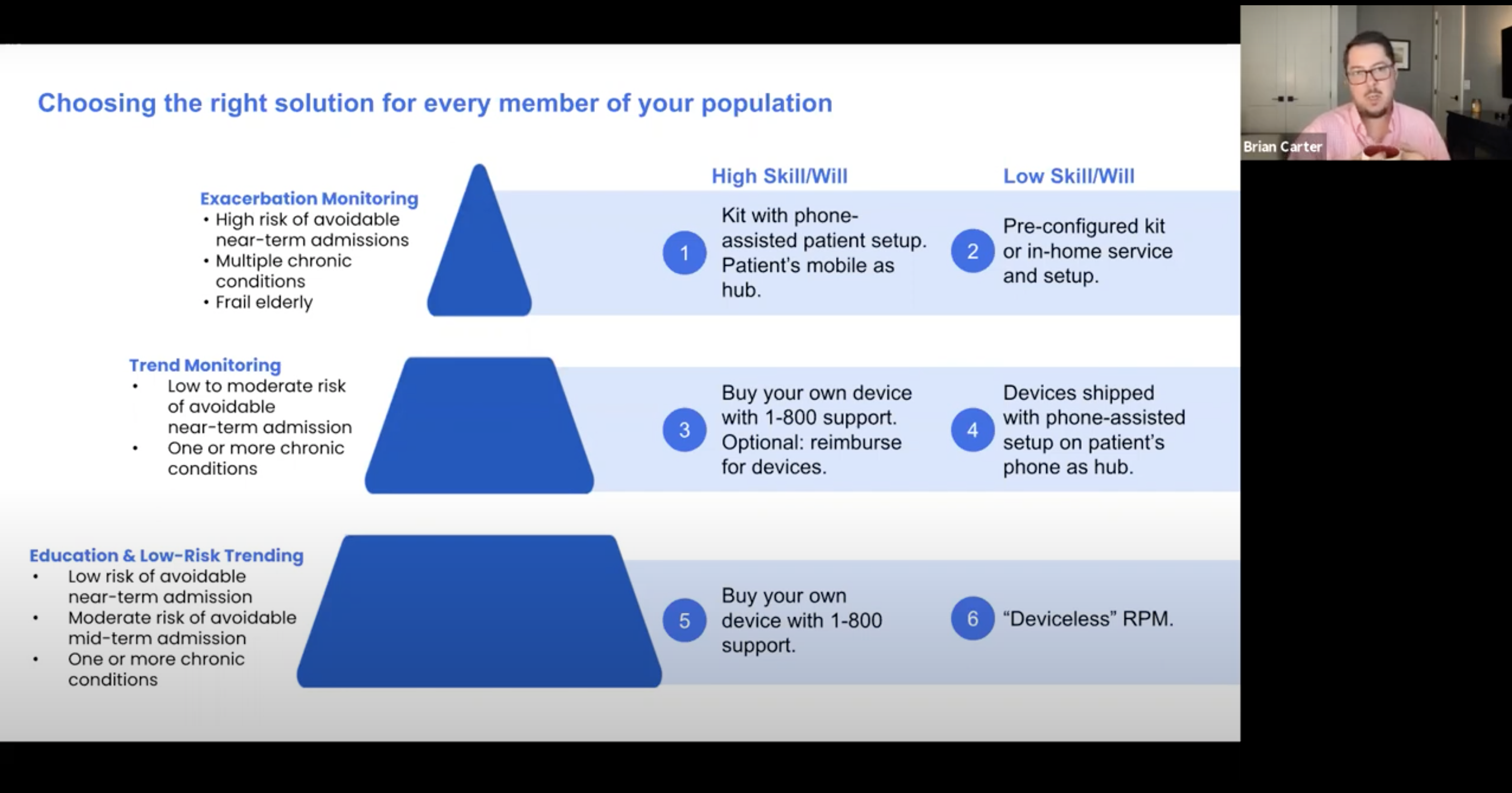[On demand] Best practices for device selection, logistics, and support for RPM

For many organizations, device strategy remains a significant hurdle in their efforts to design and mature remote patient monitoring (RPM) and chronic condition management programs. The fact is that a percentage of the people who may benefit the most from RPM either can’t or won’t be able to acquire and set up their own devices to capture and stream data.
To help organizations expand their RPM approach to meet the needs of all patients and members, organizations need solutions that can be tailored to the individual. In many cases, the best way to get connected medical devices such as blood glucose meters, blood pressure monitors, pulse oximeters, and weight scales to work for people will be with the assistance of a third-party device partner and a kitted, pre-connected approach.
During the second episode of Validic’s Best Practices for RPM webinar series, industry experts shared Best Practices for Device Selection, Logistics, and Support for RPM.
Validic’s Chief Operating Officer, Brian Carter, has developed his view on RPM program design over two decades in healthcare IT and population health. He stressed that approaches to population health have to account for people across the full spectrum of acuity.
“When you think about digital health or remote monitoring solutions, we think it’s really important to identify a platform that’s going to allow you to tackle that variety of different use cases, fulfillment models, and onboarding models. There is not a one-size-fits-all approach that works for every program,” said Carter. “And we think the same thing about logistics, support, and supply chain. That’s why we think Trapollo is cool; they have that same model to enable multiple approaches to device management.”

When Validic launched HealthBridge Express earlier this year to provide pre-connected device kits within the existing clinical workflow, the solution came with Trapollo as an early partner.
Mike Braham, SVP & General Manager at Trapollo, sees third-party device support and kitted approaches as the logical extension of healthcare’s quadruple aim in RPM. He says by working with a device partner, organizations gain the expertise of supply chain professionals to get the right technology to patients in the right way — creating better experiences for providers and patients in an efficient manner.
“It’s all about selecting the technology that’s going to fit the patient, personalizing these health kits to their needs, and making sure everything is working together before it ever goes out; it really helps to increase the adoption of these programs. Then, when a patient is done with the device, we can bring it back, recondition and clean the device, and then redeploy the technology to help more people,” said Braham. “And as people are seeing more now, the shipping element of the supply chain is so critical. That’s where we’re able to step in and help with the relationships and knowledge we’ve gained over years of doing this.”
“It’s all about selecting the technology that’s going to fit the patient, personalizing these health kits to their needs, and making sure everything is working together before it ever goes out; it really helps to increase the adoption of these programs.” - Mike Braham, SVP & General Manager at Trapollo
For Braham and the Trapollo team, their dedication to their clients and the people they serve goes beyond simple logistics. They know what it means for patients to feel like they have someone on their side when dealing with medical issues and navigating technology.
“We have the opportunity to give love every day. So when we’re answering technical questions and challenges, we know we can do this in a loving, caring way and help patients feel like they have a full team in their corner to help achieve their health goals,” said Braham.